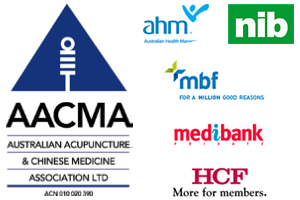Acupuncture doubles the fertility rate of women with infertility due to hyperprolactinemia. The condition involves excess production of the hormone prolactin. Pregnancy is increased with CV6 (Qihai), CV4 (Guanyuan), and other points. Indications include infertility, breast milk secretion, amenorrhea, and low sex drive. The researchers discovered that treatment with the drug bromocriptine resulted in a 20% pregnancy rate. When acupuncture was added to the treatment regimen, the fertility rate increased to 43.3%.
Acupuncture demonstrated several other benefits. Acupuncture shortened the period of time needed to lower levels of prolactin. Acupuncture also helped to regulate estrogen, progestin, and follicle stimulating hormone (FSH) levels. In addition, acupuncture reduced the side effects caused by bromocriptine intake.
Bromocriptine is used for the treatment of hyperprolactinemia, acromegaly, and Parkinson’s disease. It is an ergot alkaloid that blocks prolactin release from the pituitary gland. Side effects include dizziness, nausea, confusion, hallucinations, and uncontrolled bodily movements. The researchers discovered that acupuncture increases the positive patient outcomes associated with bromocriptine intake while mitigating its adverse effects.
Researchers from the Hunan Mawangdui Hospital compared bromocriptine intake with an integrated approach to care involving acupuncture combined with bromocriptine intake. A total of sixty patients were randomized into the drug group and the drug combined with acupuncture group. Bromocriptine was administered at 1.25 mg, twice per day after meals. After the eighth day, the dosage was increased to 2.5 mg.
Acupuncture was administered starting on the eighth day after menstruation. The primary acupoints were:
CV6, Qihai
CV4, Guanyuan
ST36, Zusanli
SP6, Sanyinjiao
LV3, Taichong
KD3, Taixi
LV5, Ligou
Needle retention time was 30 minutes. Acupuncture was administered once per day and ten treatments comprised one course of care. For each menstrual cycle, one course of acupuncture care was administered. Baby
The drug only group had 19 patients reporting adverse effects to the medication intake. The acupuncture combined with drug group had 7 patients reporting adverse effects to the medication. The researchers concluded that acupuncture reduces the instances of adverse effects due to bromocriptine intake.
The pregnancy rate increase was significant. Women taking bromocriptine had a 20% pregnancy rate. Women receiving the integrative model of care using both bromocriptine and acupuncture had a 43.3% pregnancy rate. The researchers concluded that acupuncture enhances the efficacy of bromocriptine therapy.
References:
Hu, J., Yan, X. L. & Wang, Z. X. (2014). Acupuncture and Bromocriptine in the Treatment of Special HPL in Infertile Women. Journal of Clinical Acupuncture and Moxibustion. 30(7).
Mah PM, Webster J (2002). Hyperprolactinemia: etiology, diagnosis and management. Semi Reprod Med. 20.
Zhang, P. (2012) Efficacy of bromocriptine in treating 101 hyperprolactimia cases. Journal of Jingchu University of Technology. 24 (7): 50-52.
Hullender Rubin, Lee E., Michael S. Opsahl, Lisa Taylor-Swanson, and Deborah L. Ackerman. “Acupuncture and In Vitro Fertilization: A Retrospective Chart Review.” The Journal of Alternative and Complementary Medicine (2013).



